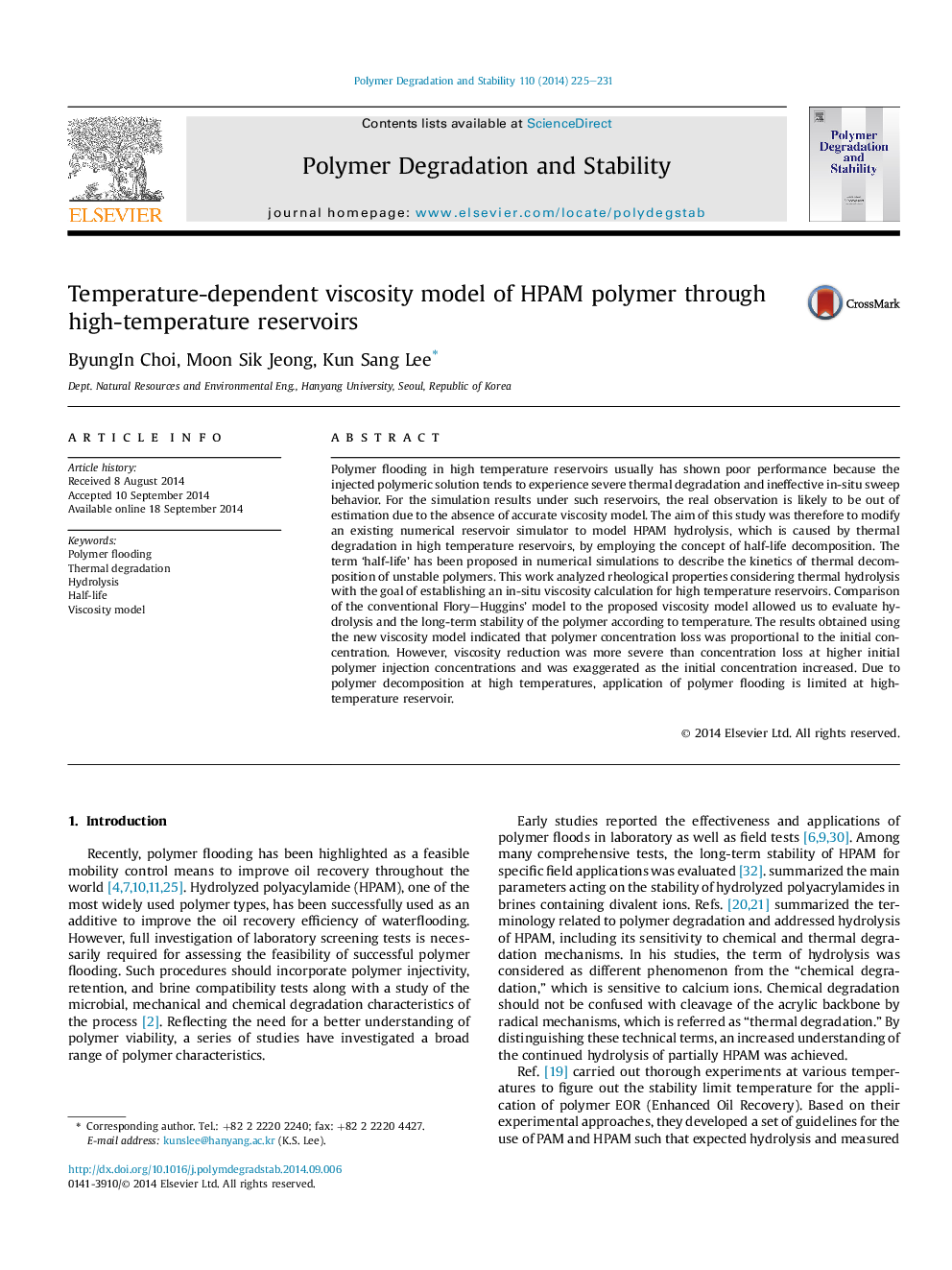| Article ID | Journal | Published Year | Pages | File Type |
|---|---|---|---|---|
| 5201655 | Polymer Degradation and Stability | 2014 | 7 Pages |
Abstract
Polymer flooding in high temperature reservoirs usually has shown poor performance because the injected polymeric solution tends to experience severe thermal degradation and ineffective in-situ sweep behavior. For the simulation results under such reservoirs, the real observation is likely to be out of estimation due to the absence of accurate viscosity model. The aim of this study was therefore to modify an existing numerical reservoir simulator to model HPAM hydrolysis, which is caused by thermal degradation in high temperature reservoirs, by employing the concept of half-life decomposition. The term 'half-life' has been proposed in numerical simulations to describe the kinetics of thermal decomposition of unstable polymers. This work analyzed rheological properties considering thermal hydrolysis with the goal of establishing an in-situ viscosity calculation for high temperature reservoirs. Comparison of the conventional Flory-Huggins' model to the proposed viscosity model allowed us to evaluate hydrolysis and the long-term stability of the polymer according to temperature. The results obtained using the new viscosity model indicated that polymer concentration loss was proportional to the initial concentration. However, viscosity reduction was more severe than concentration loss at higher initial polymer injection concentrations and was exaggerated as the initial concentration increased. Due to polymer decomposition at high temperatures, application of polymer flooding is limited at high-temperature reservoir.
Related Topics
Physical Sciences and Engineering
Chemistry
Organic Chemistry
Authors
ByungIn Choi, Moon Sik Jeong, Kun Sang Lee,
